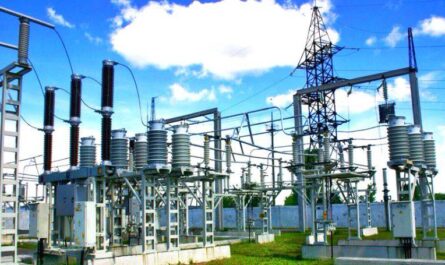It utilize a single shaft to connect the turbine rotor to its generator or equipment. In this configuration, the turbine and generator shafts rotate together at the same speed. This makes the single shaft design mechanically simple compared to other turbine types. However, it comes with some operational tradeoffs.
Main Components of a Single Shaft Turbine
The key components of a Single-shaft Turbine include:
Turbine section: Contains the stationary blades (stator) and rotating blades (rotor). The rotor is directly connected to the shaft. Water or gas expands through this section, causing the rotor to spin.
Shaft: Acts as the central connection between the turbine and the generator. It transmits rotational energy from the turbine to the generator.
Generator: Converts the mechanical energy of the spinning shaft into electrical energy. Directly connected and spins at the same rate as the turbine.
Thrust bearing: Supports the weight and axial thrust of the rotating components and allows free rotation of the shaft.
Guide vanes: Adjustable stationary vanes used to direct water/gas flow onto the turbine blades for maximum efficiency.
Working Mechanism of a Single Shaft Turbine
The working of a single shaft turbine is quite simple. Pressurized water/steam enters the turbine section through fixed nozzles. The flowing fluid strikes and moves the turbine blades connected to the rotor. This makes the rotor spin along with the directly coupled shaft.
The shaft rotates the generator at the same speed, producing electricity through electromagnetic induction. The generator either feeds directly into the power grid or charges batteries/capacitors for storage and usage. Thrust bearings allow for frictionless rotation of the shaft assembly during operation. Guide vanes can be adjusted to optimize the fluid flow depending on load conditions.
Advantages of the Single Shaft Design
Mechanically simple configuration with fewer moving parts compared to other designs.
Direct mechanical coupling ensures zero speed difference between turbine and generator rotations.
Shaft transmits full rotational energy directly without losses in gearboxes.
Less maintenance requirements due to absence of gearboxes and fewer components.
Compact layout needs smaller footprints for installations.
Limitations of the Single Shaft Design
Turbine and generator must operate at the same constant speed determined by rotor design.
Unable to alter speeds independently for better efficiency at different loads.
Generator cannot be optimized separately for varying speeds.
Any faults in either component directly affect the operation of the other.
Mismatches in turbine/generator characteristics lead to dissipated energy.
Applications of these Turbines
Given the inherent constraints of fixed-speed operation, single shaft turbines find applications in locations where electricity demands remain consistent. Some common uses include:
Small Hydropower Plants: Low-head hydro installations use Pelton, Turgo or cross-flow turbine designs directly coupled to small generators. Suitable for powering villages, farms or remote facilities.
Steam Turbines: Single shaft designs work well in constant-load applications like powering industrial equipment or desalination plants through cogeneration.
Prime Movers: Used as mechanical drivers in locations where electric grid connectivity is not possible, like at remote mining or drilling sites.
Cogeneration Systems: Waste heat from a single shaft gas turbine can be recovered to provide heat/cooling to nearby buildings or processes.
Emergency Power: Reliable backups during grid failures utilize the simplicity of directly coupled generator sets run on diesel.
Despite its limitations, this turbine remains advantageous for simpler, low-cost installations requiring consistent load profiles. The direct mechanical coupling eliminates inefficiencies, while the compact design allows flexible on-site installations. With suitable applications matched to its characteristic operating mode, the single shaft turbine continues serving many niche roles effectively in power generation systems.
*Note:
1. Source: Coherent Market Insights, Public sources, Desk research.
2. We have leveraged AI tools to mine information and compile it.




